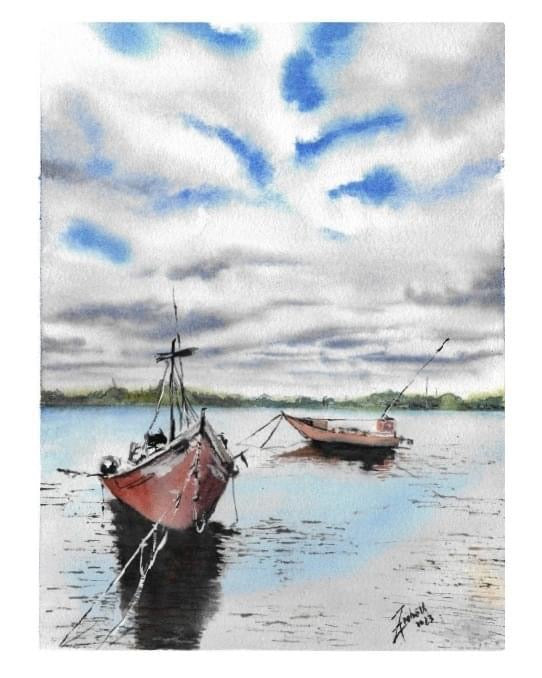Watercolor is a painting technique that uses pigments diluted in water and applied to paper. It is known for its transparency, luminosity and the fluidity of its colors. Watercolor has been used throughout art history in a wide variety of styles and genres, from landscape painting and still life to illustration and abstract art.
The watercolor painting process generally involves the following steps:
1. Paper preparation: Specially designed watercolor paper is used that can withstand water absorption and paint application without deteriorating. The paper can be pre-stretched to prevent curling during the painting process.
2. Layering: Watercolor is applied in transparent and translucent layers, starting with the lightest areas and then adding layers of color to build shape and texture. Artists can use different techniques, such as washing, wet-on-wet, and dry-on-dry, to achieve different effects and finishes.
3. Water control: Water control is essential in watercolor, as it determines the intensity of the color and the way the pigments mix. Artists can vary the amount of water used to create gradient, blurred or textured effects.
4. White area reservation: Artists can use white area reservation techniques, such as using masking tape or candle wax, to protect certain areas of the paper and create light and shadow contrasts in the painting.
5. Finishing and fixing: Once the paint has completely dried, a fixative can be applied to protect the surface and prevent the colors from fading over time.
Some great exponents of watercolor include:
1. JMW Turner (1775-1851): Known for his stunning landscapes and his ability to capture atmosphere and light, Turner was one of the greatest masters of watercolor in the history of British art.
2. John Singer Sargent (1856-1925): Celebrated for his watercolor portraits and landscapes, Sargent was a virtuoso in using the technique to create effects of light and color.
3. Winslow Homer (1836-1910): Recognized for his paintings of nature and marine scenes, Homer was one of the leading American artists in the use of watercolor as an artistic medium.
4. Paul Cézanne (1839-1906): Although best known for his work in oils, Cézanne also explored watercolor in his later works, experimenting with the transparency and fluidity of pigments.
5. John Marin (1870-1953): Considered one of the pioneers of modern art in the United States, Marin was an innovator in the use of watercolor to depict the energy and movement of urban life and nature.
These are just a few examples of the many artists who have left an indelible mark on the history of watercolor with their technical mastery and visionary creativity. Each of them has contributed to the development and evolution of this revered painting technique.
